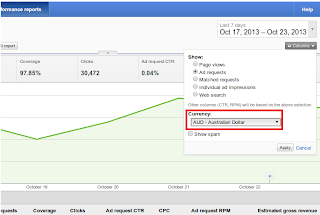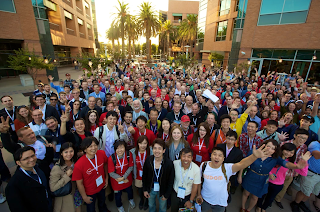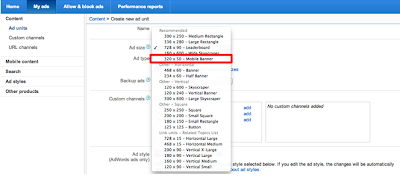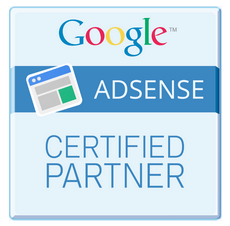Updates to the currency feature in performance reports



Was this blog post useful? Share your feedback with us.

At some point most app developers will be faced with the question: ‘What’s the best way to monetize my app?’. There are many business models, but many don’t think about the additional opportunities to earn revenue from content they’ve already created. Izumi Artisan is a Japanese developer who’s been successful in earning money from his app, then using the content to create a website to earn additional income. We will explore his strategy in this post.
————————————————————
[Goal]
[Approach]
[Results]
————————————————————
‘Old Offender was the very first app that we made’

At the time of building our first app, my brother and I didn’t have engineering skills. So I went to a local book store and bought “Java for the First Time”, and taught myself how to make a mobile app. I chose to make escape games because the programming needed to build one was relatively simple. Also, there were not many other similar apps for smartphones in that category. So we worked together and published ‘Old Offender: Escape from Prison’ as our first gaming app.
‘Ads are better than a paid business model’
When considering the monetization method, we chose ads. At that time, paid apps were not that popular in Japan. Now, we’re using multiple ad networks using a mediation tool, and for foreign countries we’re only using AdMob.
‘We saw a 60% revenue increase by using Google AdSense’
After we launched the app we had feedback from users asking for hint-and-tips, so I immediately decided to take action. We chose to make a bulletin board website where users can interact with each other to find the answer to a challenge in the game. My brother designed the website and had it ready within a week. We also signed up for Google Adsense to post ads on the website. Signing up and implementing AdSense did not take more than 2 days and we were able to stat monetize our website with the least resource but high impact. Furthermore, we saw a 60% revenue increase by using Google AdSense and the web business is now 40% of the sales of the company.
Posted by Yuya Sumida – Account Manager
Was this blog post useful? Share your feedback with us.

Another important area to look at is whether you have a complete monetization strategy in place. On average only 1-5% of traffic on an e-commerce site will convert to a sale, so it’s important to know what options are available to monetize the visits that don’t convert.
Tune in to our e-commerce Hangout On Air on Tuesday, November 26th, where we’ll talk through some of the steps you can take to ensure your site is well set up to capture the seasonal opportunity. We’ll also answer a few of your questions, which you can submit when you RSVP to watch the live stream. During this session, we’ll cover the following topics:
| Click here to RSVP |

What’s even easier is that most of the same optimization tips used for desktop, also apply with mobile. We’ve found that the 320×50 and 300×250 tend to monetize best on mobile. Here we’ve listed some initial optimization tips to get you started:
This new feature is available directly from your AdSense account and lets you quickly create, run and analyze A/B experiments for specific ad units — all without needing to make any changes to your ad or page code. It works by comparing your original ad unit settings to a variation you choose, and ultimately tells you which one performs better. Here are just a few examples of the types of tests you can run:

Approximately 24 hours after you set up an experiment in your account, you’ll see a confidence score for the two ad units settings. This score indicates how likely the original or the variation is to be the better performing setting in the long term. Confidence scores may change as the experiment progresses, and we recommend waiting until one of the scores reaches at least 95% before choosing that setting as the winner. Once you chose the winning setting, the experiment ends and the setting is automatically applied to the specific ad unit. Please note that while an experiment is running, our system will automatically optimize the traffic split between the two ad unit settings. The better one setting performs, the more traffic it will receive, helping you maximize your revenue potential even during the experiment.

Posted by Federico Gomez Kodela – Mobile Specialist
Was this blog post useful? Share your feedback with us.

Since 2003, AdSense has helped publishers from around the world earn from their content and grow their businesses. Over time, we’ve also seen growth in the number of consultants and service providers who have built their own businesses around helping publishers succeed with AdSense. With this in mind, we’ve created the Google AdSense Certified Partner Program to work more closely with these service providers and recognize the expertise they’ve developed.
If you use AdWords or Analytics, you may be familiar with the similar Certified Partner programs we offer for those products — qualified companies can become certified to help you manage your account, should you require additional support for your business. Just like in these other programs, AdSense Certified Partners are carefully vetted by Google, and meet rigorous qualification standards. AdSense Certified Partners can assist with dedicated services ranging from setting up AdSense ad code on your pages to running ongoing optimization tests for you.
For service providers interested in this new program, we’ve put together comprehensive training and testing resources that cover all aspects of AdSense. Once a company has passed our qualification exam and met additional criteria to become a Certified Partner, they’ll be added to our official program website and receive a program logo for their own site. Certified Partners will also have access to marketing resources and tools to help them manage client accounts, and will join a group of accredited companies. We currently have 13 active Certified Partners, and will be adding more to the list throughout the year.
If you’re a prospective Certified Partner or a publisher interested in the services offered by these Certified Partners, you can visit our program website or Help Center for more information. We look forward to working with this group of partners and continuing to expand the range of options available to publishers in the AdSense program.
Posted by Catherine Downes – AdSense Certified Partner Team

As tech-savvy consumers, we’ve all contributed to the growth in online traffic coming from mobile and tablet platforms, and as publishers you’ve likely heard the importance of adapting a multi-device approach to cater for this growing trend. But exactly how important is it? How do you develop a multi-device strategy? And how does all of this equate to increased revenues for you?
Over the coming weeks, we’ll run a series of posts that aim to answer exactly that. We’ll explore building mobile solution options to suit you, and also explain how you can use AdSense to monetize your mobile sites or AdMob.
Where are your users coming from?
We’re living in a multi-screen world where users expect to have access to information, people, and computing power from any screen. Here are just a few findings from a recent survey*:
To see how these shifts in consumer behavior are relevant to your site, check the Platforms report in your AdSense account. It’s a good idea to pull a comparison report and track the growth in your percentage of mobile and tablet users over the past quarter or year. Chances are, you’re going to see a shift away from desktop with more of your online content being reached via tablet and mobile. If your site isn’t designed to cater for this growing market then now is the time to start building your multi-device strategy. And we’re here to make you aware of some of the options open to you! Join us next week when we’ll be covering a range of mobile solutions to help you discover the right one for your business.
If you’d like to learn more about what we’ve discussed today, you can also check out a recording of our recent Hangout, “Mobile – The Time is Now”.
*Study completed by Google in collaboration with Sterling Brands and Ipsos, on a sample of 1,600 users, (2012).
Posted by Federico Gomez Kodela – Mobile Specialist
Was this blog post useful? Share your feedback with us.
In the past, we shared our guiding principles for user experience and asked some of our most successful publishers to share their thoughts. However, many of you told us you’d like to see more examples of how to actually apply the principles to your site. We’ve heard your feedback and, on November 1st, we’ll show you how in a Learn with Google Hangout on Air that takes you behind the scenes of a user experience consultation.
During the Hangout on Air, we’ll evaluate a pre-selected AdSense publisher’s website and teach you how to take a step back, apply a critical eye, and evaluate whether or not the user experience on your own site complements your site goals. We’ll identify specific changes the publisher can make to improve the user experience, walk through our recommendations, and answer a few of your user experience questions, which you can submit when you RSVP to watch the live stream.
RSVP to let us know if you’ll be watching the Hangout on Air and we’ll see you on November 1st!
| Click here to RSVP |
Posted by Laurie Shiau – Inside AdSense Team
Was this blog post useful? Share your feedback with us.
Launching the week of October 15th, the goal of our survey is to collect as much of your feedback as possible. It covers a range of topics across all of our publisher products, ranging from new feature requests to help resources and much more. Since our last survey, we’ve addressed your feedback with new features like in-account policy notifications, responsive ad units, a mobile app for AdSense, and new functionality in the Publisher Toolbar.
We’ll be sending the survey out by email shortly to a sample of publishers. If you’d like to participate, there’s a couple of steps you should take as soon as possible:
Whether you’ve filled out every previous survey or you’re providing your feedback for the first time, we’re really grateful for you taking the time to tell us how we’re doing and look forward to hearing your thoughts and ideas!
Posted by Sahar Golestani, on behalf of the AdSense Publisher Happiness Team
Was this blog post useful? Share your feedback with us.
Our new design puts a strong emphasis on readability. We’ve introduced larger and clearer titles, more generous white space, and a flat circular button design, which complements the colors of other elements in the ad.

We’ve also updated how we show multiple ads within a single ad unit. Our design, illustrated below, only expands a full view of other ads when a user interacts with an ad unit either by a mouse hover or touch.

Keep an eye out for the redesign and don’t forget to try our recently launched new fonts. Let us know what you think of this new look over on our AdSense + page.
Posted by Adnan Virk – Ad Formats Designer
Was this blog post useful? Share your feedback with us.
To use AdSense on your HTTPS-enabled sites, simply create an ad unit in AdSense and then paste the ad code into the HTML source code of your page where you’d like the ad to appear. The old version of the AdSense ad code will not work with your HTTPS-enabled sites but you can get and copy the ad code for an existing ad unit.
HTTPS-enabled sites require that all content on the page, including the ads, be SSL-compliant. As a result, our systems will remove all non-SSL compliant ads from competing in the auction on these pages. This means that if you convert your HTTP site to HTTPS, ads on your HTTPS pages might earn less than those on your HTTP pages.
Please visit our Help Center for more details on this feature. If you have a HTTPS-enabled website we’d love to hear your thoughts.
Posted by Sandor Sas – AdSense Software Engineer
Was this blog post useful? Share your feedback with us.